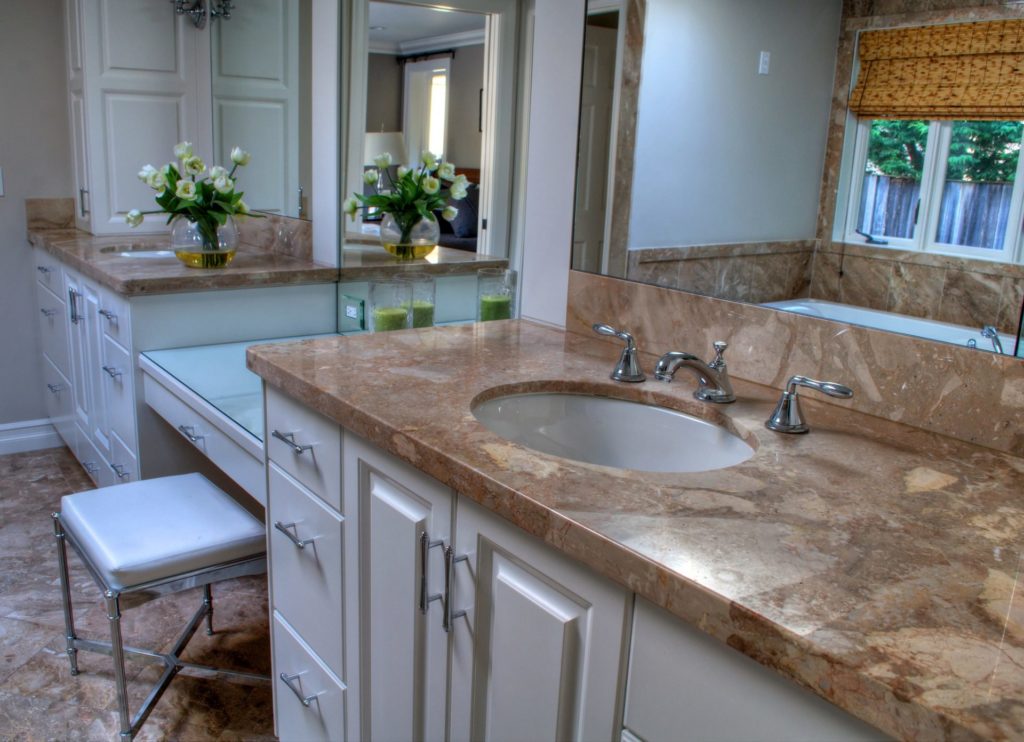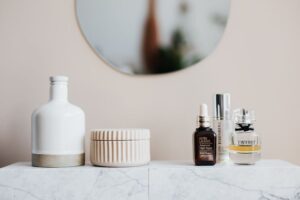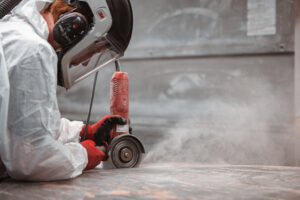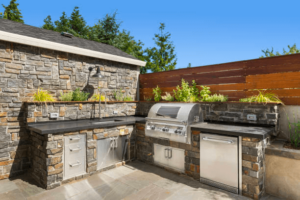Marble is a beautiful material, it brings sophistication and elegance to any home and will never go out of style. No matter the look of your home there’s a colour of marble that will fit perfectly, be it white, black or even pink. Marble is a great material to choose for kitchens, bathrooms, walls, stairs and fireplaces around the home because it is bright, smooth and will open any room. It’s also recognised as the highest quality surface for a worktop and is as popular now as ever but marble does require a certain level of maintenance to keep it sparkling. Our experts run you through how to polish marble surfaces below, for additional help and advice, contact our friendly team.
How Does Marble Lose Its Shine?
Marble can lose its shine due to various factors, including natural wear and tear, improper cleaning methods, and the accumulation of dirt and grime. Over time, foot traffic, furniture movement, and other activities can cause microscopic scratches on the marble surface. These scratches can diffuse light and give the appearance of a dull finish. Etching can also occur causing marble to lose its shine. Marble is a calcium-based stone, which makes it susceptible to etching when it comes into contact with acidic substances like lemon juice, vinegar, or certain cleaning products. The etching appears as a dull, lighter-coloured spot on the marble surface.
It’s important to also note that excessive moisture or water exposure can also cause the marble to lose its shine. Water can seep into the porous surface of the marble, leading to discolouration or the formation of mineral deposits.
Why is it important to Clean Marble Properly?
Another factor to consider for marble to lose its shine is improper cleaning methods. Using abrasive cleaners, acidic solutions, or rough scrubbing pads on marble can wear away the polished surface and cause it to lose its shine. It’s important to use pH-neutral cleaners specifically designed for marble to avoid damage. Over time, dirt, dust, and other particles can accumulate on the marble surface, making it appear dull. However, regular cleaning and maintenance help prevent the buildup of these substances.
Polishing Marble Worktops
Polishing marble countertops can help restore its shine and enhance its appearance. Here’s a step-by-step guide on how to polish marble:
Step 1: Clean the surface
Before polishing, ensure that the marble surface is clean and free of dust, dirt, and any stains. Cleaning marble requires some special care to ensure that you don’t damage or stain the surface. You’ll need a soft cloth or sponge, a pH-neutral cleaner specifically designed for marble, warm water, and a dry, clean cloth for drying.
Start by removing any loose dirt or dust from the marble surface using a soft cloth or a dusting tool. Mix a small amount of the pH-neutral marble cleaner with warm water according to the instructions on the product label. Avoid using acidic or abrasive cleaners, as they can harm the marble. Before cleaning the entire marble surface, it’s recommended to test the cleaning solution in a small, inconspicuous area to ensure it doesn’t cause any discolouration or damage.
Next, you will need to dip the soft cloth or sponge into the cleaning solution, wring out excess liquid, and gently wipe the marble surface. Use light pressure and circular motions to avoid scratching the marble and pay attention to any spills or stains and give them extra attention. Make sure to avoid letting the cleaning solution sit on the surface for an extended period. Once you’ve cleaned the marble, rinse the cloth or sponge with clean water and wipe the surface to remove any residue from the cleaning solution. Use a dry, clean cloth to dry the marble surface completely. This step is essential as leaving marble wet can lead to water spots or streaks.
Step 2: Assess the condition
Examine the marble surface for any scratches, etching, or deep stains. If there are significant damages or stains, it may be best to seek professional help for restoration.
Step 3: Choose a marble polish
Select a high-quality stone polish of your choice. You can find marble polishes in the form of powders, creams, or sprays. Follow the product instructions for the recommended application method.
Step 4: Test in a small area
Before applying the marble polish to the entire surface, it’s advisable to test it in a small, inconspicuous area to ensure it doesn’t cause any discolouration or damage.
Step 5: Apply the marble polish
Depending on the type of polish you’re using, follow the product instructions for the application method. Typically, you’ll apply a small amount of polish to the marble surface and use a soft cloth or polishing pad to buff it in a circular motion. Apply the polish evenly, covering the entire area you want to polish.
Step 6: Buff the marble
Using a clean, soft cloth or a polishing pad, buff the marble surface in a circular motion. Apply gentle pressure and continue buffing until you achieve the desired shine. You may need to repeat the process for stubborn dull spots or scratches.
Step 7: Clean and remove residue
After polishing, use a clean, damp cloth to remove any residue or excess polish from the surface. Ensure that all polish is thoroughly removed, as leftover residue can cause streaks or dull spots.
Step 8: Dry and admire the shine
Allow the marble surface to dry completely. Once dry, you can finally admire the restored shine of your marble.
Removing Stains from Marble Worktops
To prevent staining, immediately wipe off any spills on marble countertops. Acidic or oily substances pose the highest risk, so clean them off promptly. In case of accidental staining, use a poultice at least 24 hours before polishing to remove trapped stains. Test a small spot before treating larger areas as a precaution.
Sealing Marble Surfaces
To maintain your polishing efforts and prevent any future staining and etching, you will want to seal your marble countertops. Most Marble surfaces will need to be sealed every 3-6 months for protection, as it’s a porous surface and will end up becoming more susceptible to staining. You can do this yourself at home or hire a professional if needed.
To begin, follow the polishing instructions above and make sure the surface is clean and dry. Apply the sealant evenly across the surface with a clean rag and leave to allow to be absorbed. We recommend keeping little ones out of the kitchen at the stage, so the process isn’t interrupted. After a few hours go over it with another coat and leave to settle overnight. The next morning use a clean cloth to buff away any excess that’s been leftover and you are now free to enjoy your sealed worktop. Carrying out this process will help your marble to last longer and look better in the long run.
How to Polish Marble Conclusion
To maintain the shine of your marble, it’s essential to take proper care of it. Avoid using abrasive or acidic cleaners, promptly clean up spills, use coasters or mats to protect the surface from potential damage, regularly clean and dry the marble to prevent dirt buildup and help preserve the beauty of your marble surfaces. If the shine has significantly diminished, professional restoration may be required to re-polish the marble surface and restore its original lustre.
Remember, polishing marble should be done periodically and as needed. Excessive repolishing can remove the protective layer and damage the surface of the marble. It’s always a good idea to consult the manufacturer’s instructions or seek professional advice for specific marble types or if you’re unsure about the polishing process.
If you’re looking for help from a professional to refurbish or replace your existing marble surface, speak to our friendly team of experts who can talk you through your options, including design and install of new spaces. Contact our team for advice or to book a visit to our showroom.





